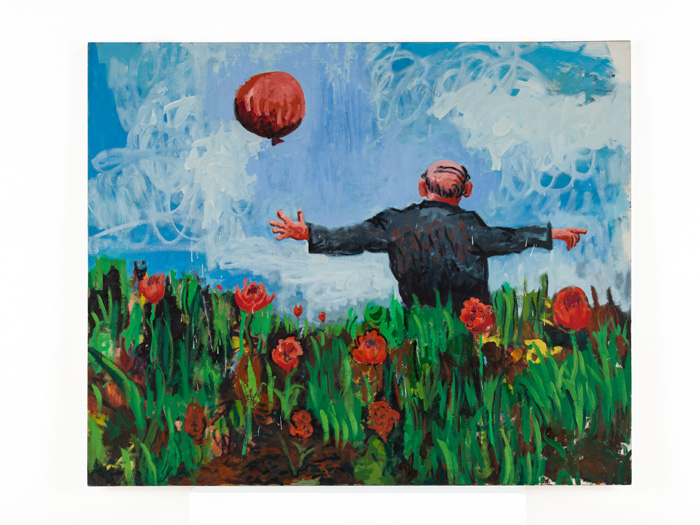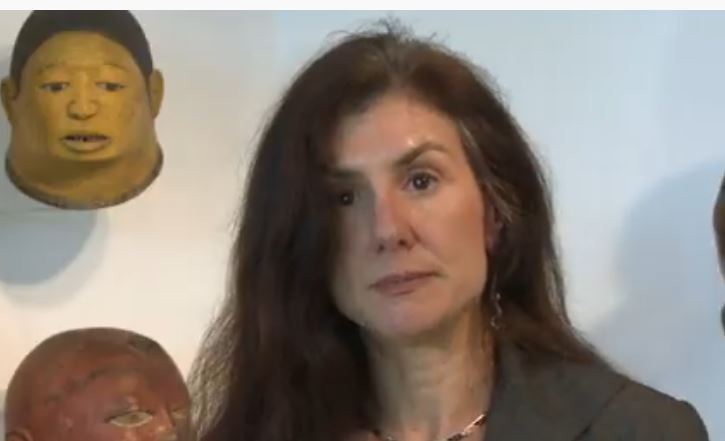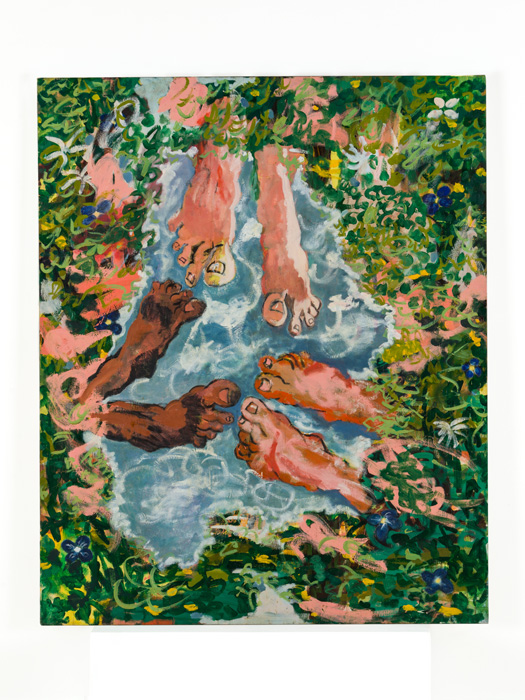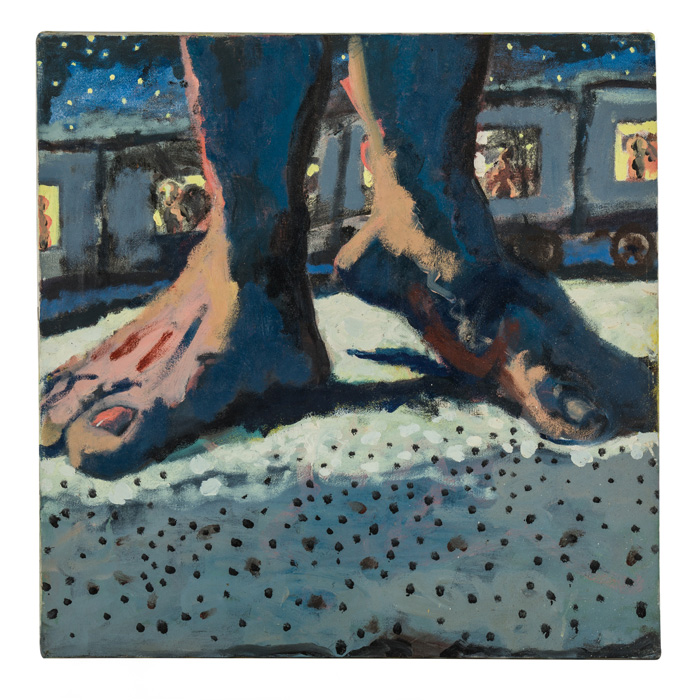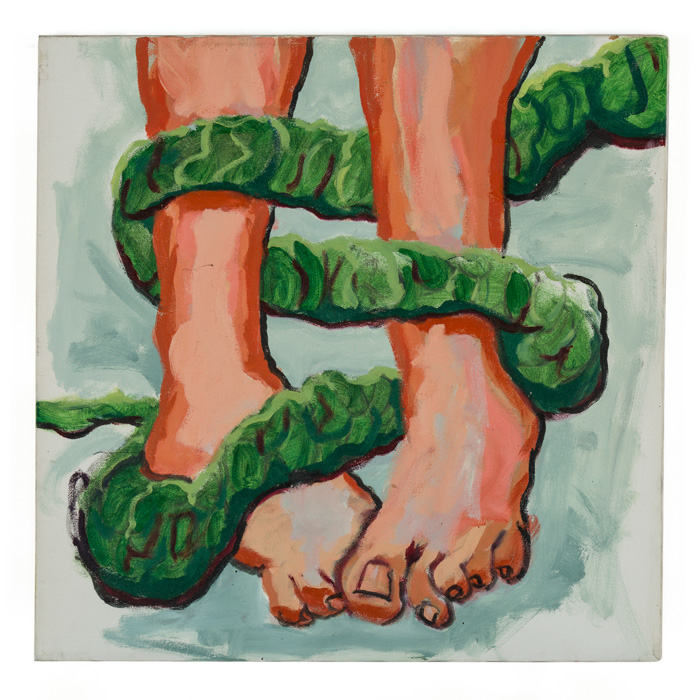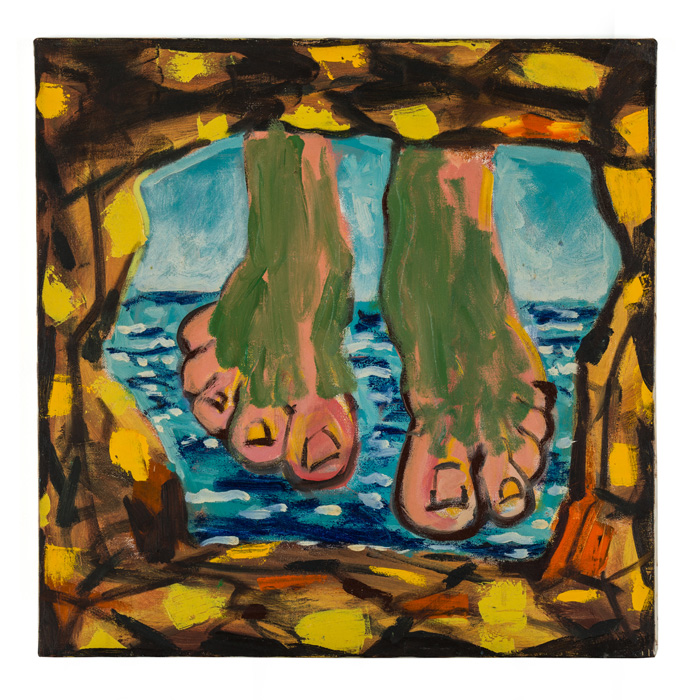By 2000 Peter had moved to his present home with Avery, who worked in an architecture firm located on the third floor of tower number 2 at the World Trade Center. Avery and his colleagues made it out before the tower collapsed on 9/11, but the tragedy brought home to Peter his vulnerability as an outsider in the United States without health insurance and shortly afterwards he took his nursing exam and got a job as a nurse on the long-term intensive care unit at Goldwater. He also started thinking about how to reintroduce the figure into his work and began his series of feet paintings, many of which are in this show. It was with these paintings that his work became more thematic, serial and cinematic. He was still profoundly concerned with formal issues, but the narrative elements of the work became more important, personal and biographical.
In 2005, Peter’s grandmother, with whom he had been extremely close, passed away. Peter painted a series of hands, including the painting of hands growing out of a forest, inspired by his grandmother’s hands. Then, in 2008 Bessie was diagnosed with a rapidly progressing form of ALS. While she was sick, Peter painted a single hand, fingers delicately pinched around a flower, which he called Shaken this Has Left Me. Peter explains this painting as a reflection about his mother’s illness but also about the inherent beauty of life. With his mother’s progressive illness and eventual death in 2010, Peter’s paintings, now fully committed to a representational language, began to more directly express themes of anxiety, alienation and loneliness. He produces a series of meditations on the isolation of the observer (literally, the eye or I) of urban life featuring subway cars, high above the city, with a single eye staring out of the window into the dark night. Another series, based on the image of a stag, began as a personal challenge to create an interesting painting using the banal, vernacular image of a stag by a lake so popular on the walls of Danish summer homes. The first of these, Stag and Orange Landscape, is reminiscent of the color saturated landscapes of the Cobra movement, but in subsequent portraits the stag takes on an increasingly terrified expression, as though facing the gun of an invisible hunter about to fire. Red Balloon, also from that period (and not part of a series) shows an older, balding man standing in a field, with outstretched arms, his back to the viewer, watching a red balloon float off into the sky. Inspired by the short film about a boy who befriends a red balloon who leads him through the streets of Paris, this painting suggests the fleeting nature of relationships, bounded by inevitable loss and the sublime contingency of human life.

